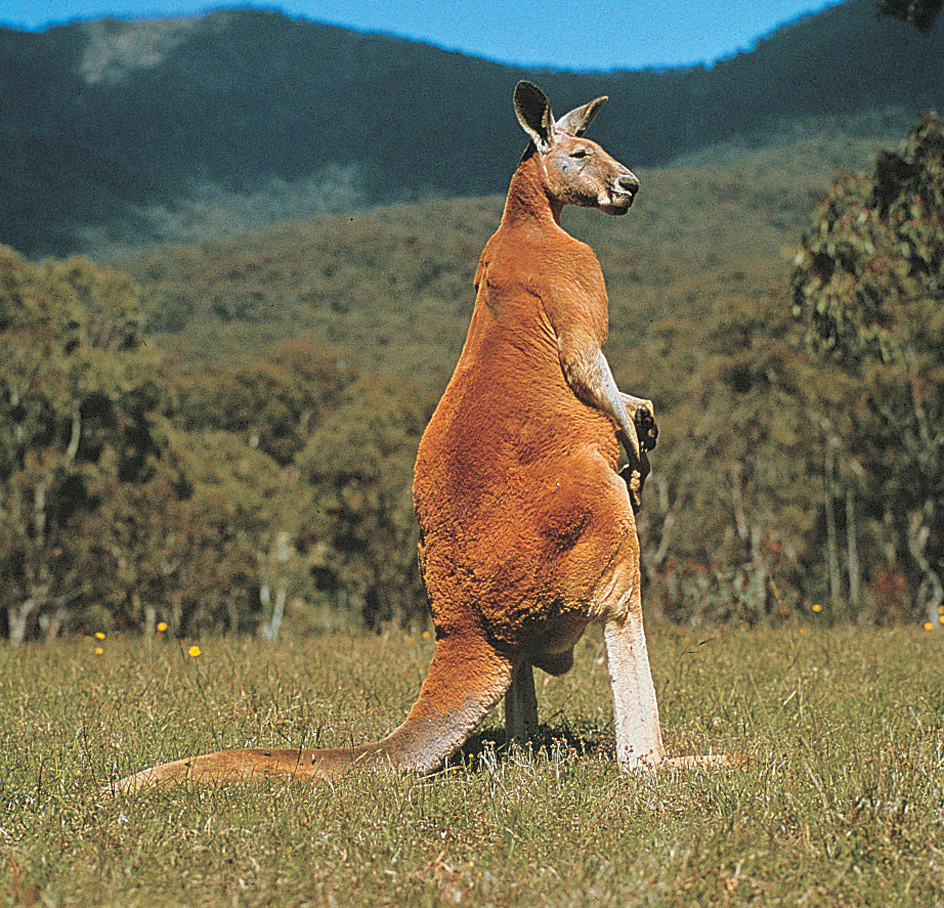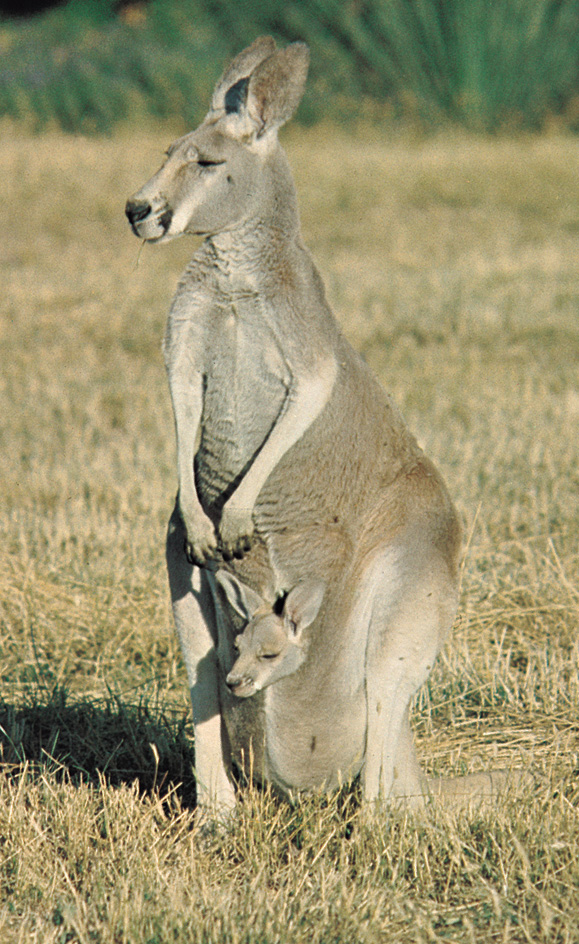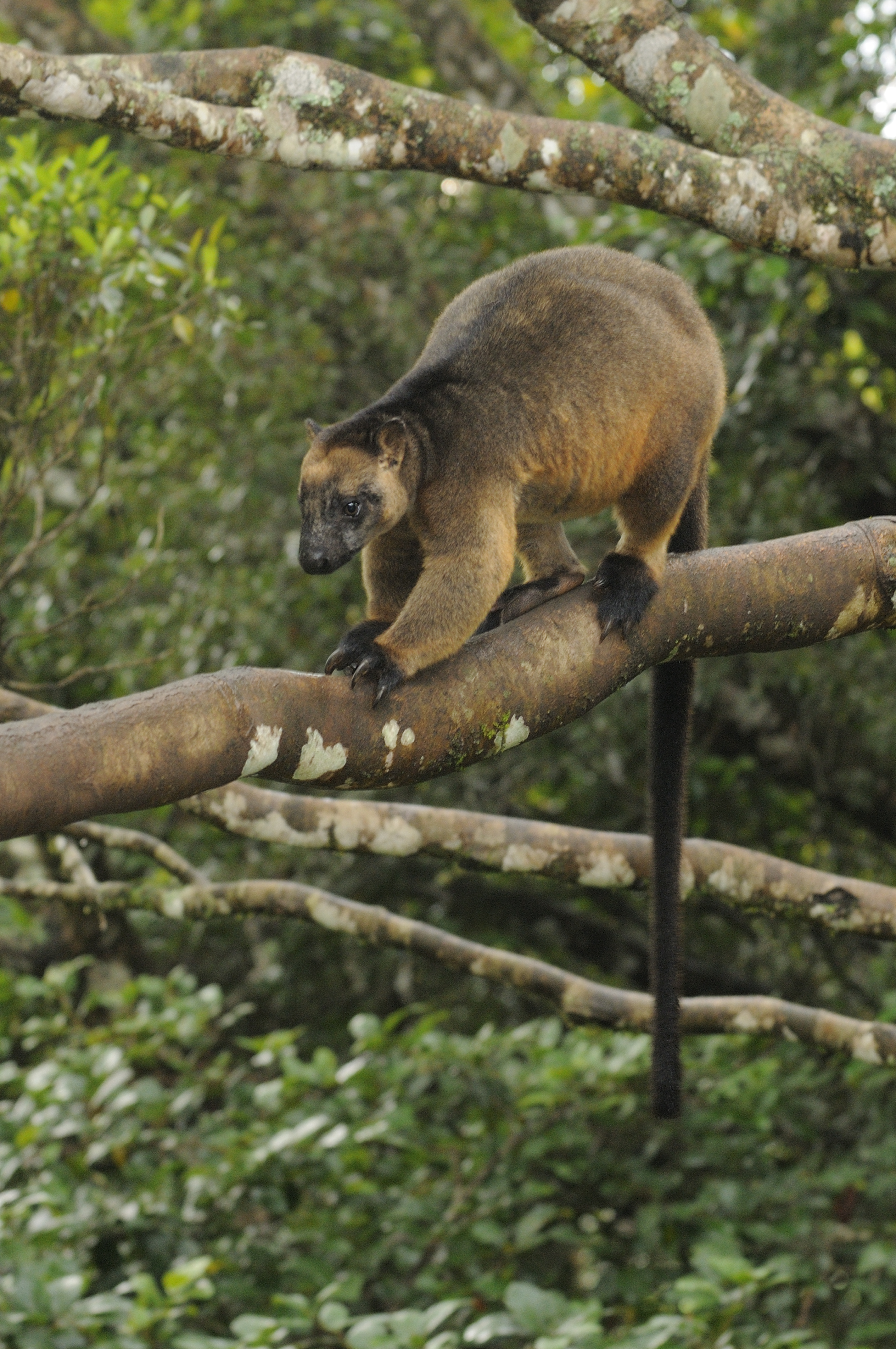Kangaroo is the name for several mammals that hop on their hind legs. Kangaroos are marsupials—mammals that give birth to extremely underdeveloped offspring. Kangaroo young complete their development in a pocketlike pouch on the belly of the mother.
Kangaroos belong to the macropod family of marsupials. The family also includes wallabies. The word macropod means large foot. Macropods have long hind legs and feet and smaller front legs. All species (types) of macropods are native to Australia, New Guinea, or nearby islands. Smaller animals called rat-kangaroos are related to kangaroos. But they do not belong to the macropod family.

Kinds of kangaroos.
The three main species of kangaroos come from Australia. Red kangaroos typically inhabit deserts and dry grasslands of central Australia. Eastern gray kangaroos live chiefly in forests and grasslands of southern and eastern Australia. Western gray kangaroos are found across the southern part of the country. Another group of macropods called tree kangaroos consists of several species. Tree kangaroos live mostly in forests of Australia and New Guinea.
Bodies of kangaroos.
The red kangaroo ranks as the largest living marsupial. Males may weigh as much as 187 pounds (85 kilograms). They can stand up to 6 feet (1.8 meters) tall. But most weigh about 110 pounds (50 kilograms) and reach about 5 feet (1.5 meters) in height. Males typically have a reddish-brown coloring. This coloring comes in part from a red secretion produced by a gland on the chest. As with all kangaroo species, female red kangaroos grow smaller than males. These females often have grayish-blue fur.
Eastern gray and western gray kangaroos have slightly smaller bodies than those of red kangaroos. In both gray kangaroo species, males and females have gray or brown fur.
A kangaroo’s small, deerlike head features a pointed snout. The animal has large, upright ears, which it can turn from front to back. Its powerful hind legs grow much larger than its front legs. Kangaroos hop only on the hind legs, which move together. The animals use their large, muscular tail for balance when hopping. Large red kangaroos can hop as fast as 30 miles (48 kilometers) per hour for short distances. They can leap over obstacles as high as 7 feet (2 meters). When grazing, kangaroos move slowly on all four feet, again using the tail for support.

The life of kangaroos.
In general, kangaroos rest during the day. They search for food in the late evening and early morning. They may become active at night in summer and may remain active all day during winter. Kangaroos feed on grass and small plants. They sometimes gather at feeding sites in groups called mobs. Otherwise, the animals live alone or in small groups consisting of a mother and her young.
Female kangaroos give birth to a single offspring about one month after mating. The baby is called a joey. The new joey measures only about 1 inch (2.5 centimeters) long. It spends six to eight months in the mother’s pouch. It attaches to one of her teats (nipples) and feeds on her milk. The female has four teats. Older joeys often try to suck milk from the teats long after leaving the pouch.

Red and eastern gray kangaroos have a special system of reproduction. After a joey is born, the mother often mates again. The embryo (unborn young) formed from this mating does not develop into a joey until after the first joey finishes suckling. After the second joey is born, the mother usually mates again. The cycle continues. This reproductive system enables kangaroo populations to recover quickly after times of drought, when their numbers often decline.
Kangaroos
Kangaroos generally live from six to eight years. However, many adults and even more younger individuals may die in periods of drought.
Tree kangaroos
do not closely resemble red or gray kangaroos. They have smaller, furrier bodies. Their hind legs grow only slightly larger than their front legs. Like other macropods, tree kangaroos can hop rapidly on the ground. But they sleep and eat mostly in trees. Leaves and fruit serve as their primary foods. Tree kangaroos can climb efficiently. They use their powerful front legs to grip branches and trunks. They can move each hind leg independently of the other.

Kangaroos and people.
Kangaroos have few enemies besides human beings and wild dogs called dingoes. The Australian government protects kangaroos with laws prohibiting their killing. However, in areas where the animals have become abundant, hunters may receive licenses to kill large kangaroos. The hunters shoot kangaroos to protect crops or to provide meat, fur, and leather. Tree kangaroos also are fully protected. But people have greatly reduced their forest habitats. The animals’ future survival remains uncertain.
